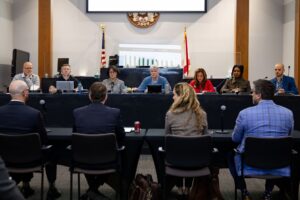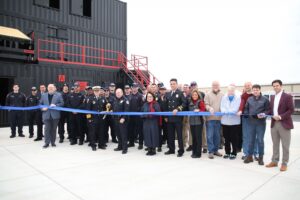Down To Earth: Farmers and forest landowners reduce carbon emissions
By Marlee Moore, Alabama Farmers Federation
When Ben Haynes plants a cover crop, he’s increasing organic matter in the soil — and capturing carbon.
Pulling a no-till planter? He’s reducing erosion — and capturing carbon.
Grazing cattle on cropland? That captures carbon, too.
“A lot of us in the South have to farm this way,” said Haynes, whose family raises row crops, cattle and hay in Fairview. “To conserve our soil and moisture, we adopted practices like no-till and cover crops a long time ago.”
Plants naturally trap carbon during photosynthesis as they remove carbon dioxide from the atmosphere and create oxygen. Increasing, or not disturbing, plant material below ground helps trap carbon, too.
As buzzwords like “carbon capture” and “greenhouse gas (GHG) emissions” enter the conservation conversation, farmers like Haynes are firm: Sustainability is an innate effect of stewarding the land.
When factoring in carbon-absorbing practices, agriculture contributes negative 2% to GHG emissions, reports the American Farm Bureau Federation.
The Alabama Farmers Federation recently adopted policy supporting voluntary carbon-credit programs and opposing mandatory regulations tied to critical programs like crop insurance. The Federation supports a level playing field for early adopters — farmers who implemented carbon-smart conservation practices years ago.
It’s a sharp contrast to the concept of additionality, which only rewards farmers for newly adopted conservation practices.
For decades, Southeastern farmers have raised a row crop in the summer and grazed cattle on cover crops or crop stubble in the winter. Many Midwesterners are just beginning to adopt that approach to double-cropping.
As farms increase efficiency, livestock emissions decrease. Livestock make up less than 4% of overall U.S. emissions. Completely natural cattle-generated gases like methane are declining. From 1961-2018, the U.S. beef industry reduced emissions per pound of beef by more than 40% while increasing production by more than 66% per animal, according to the Beef Checkoff.
When it comes to poultry production, the industry has decreased its environmental footprint by half since 1965 and reduced GHG emissions by 36%, per the National Chicken Council.
In the field, row crop farmers lower emissions through precision agriculture, which targets specific zones for weed and pest management and reduces tractor use.
“These practices are suddenly in vogue, but these are things a large percentage of our farmers have integrated for decades,” said Haynes, the Cullman County Farmers Federation president. “We didn’t do those things for a payment. We did them because they were smart. We were trying to be business smart, and those decisions happened to be climate smart.”
The same rings true for forest landowners like John Boutwell.
“All these trees are growing every day,” Boutwell said of his family’s 2,000 acres in Butler County. “When trees grow, they take in carbon dioxide. They take that carbon and make wood out of it in the tree while adding oxygen back to the environment.”
Boutwell said a recent audit found his property stored 7 tons of carbon per acre annually. Alabama, which is 71% forested, has 23.1 million acres of forestland that store about 1.16 billion metric tons of carbon, according to the Alabama Forestry Commission. Private forests produce enough oxygen for 214 million people to breathe. Alabama’s population is just over 5 million.
Boutwell’s forestland is covered with towering timber that will become plywood, paper towels, cardboard boxes and other necessities. The pines also repurpose carbon, reduce erosion and provide a place of recreation for Boutwell’s family. It’s multi-purpose land stewardship and sustainability in action.
“We do feel like we’re the original environmentalists,” Boutwell said.
This is the first in a six-part series detailing Alabama farmers and forest landowners’ sustainable practices. Learn more at DownToEarthAL.com
Down to Earth partners include the Alabama Agribusiness Council, Alabama Association of RC&D Councils, Alabama Cattlemen’s Association, Alabama Cooperative Extension System, Alabama Department of Agriculture & Industries, Alabama Farmers Federation, Alabama Forestry commission, Alabama Poultry & Egg Association and Sweet Grown Alabama.



















